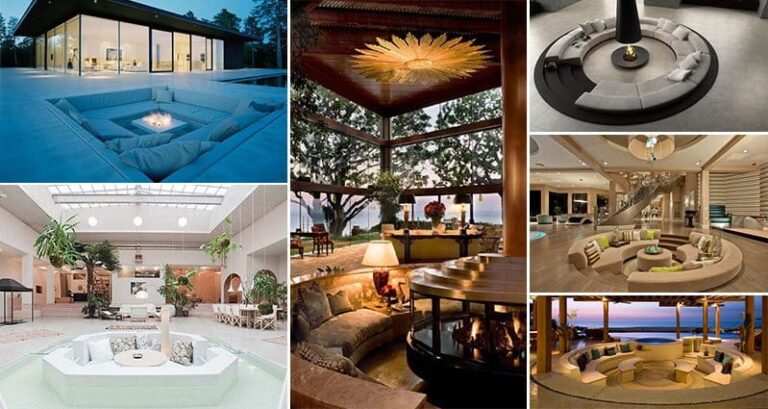If you’re thinking of making a change to your home but don’t quite know what to do, then how about building a conversation pit? These awesome architectural features will add some amazing style to any home, while also providing a unique spot to relax in. They can become the centerpiece of any room or perhaps an outdoor space on the patio or near a swimming pool. To make it even better we think the idea of having a fire in middle would be amazing! Your guests would be so cozy you’d never get them to leave! Take a look at our range of awesome examples below!
Amazing Sunken Pits
It’s like something out of a dream!
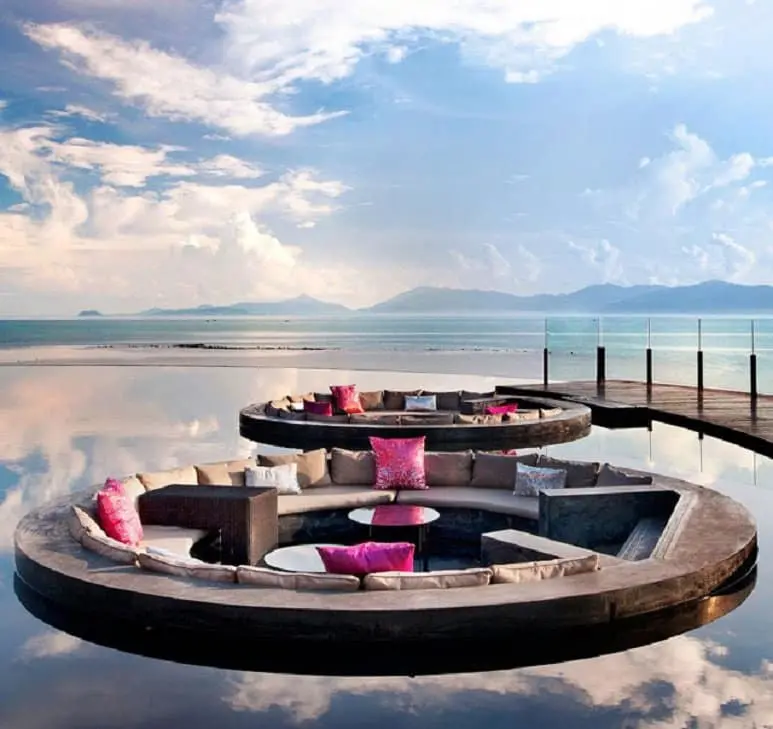
Big enough to entertain plenty of people!
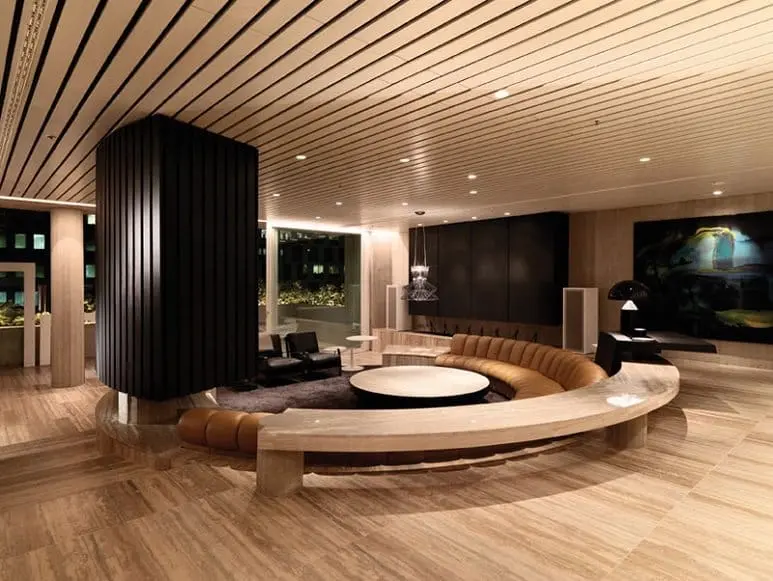
Oh how we wish we were here right now!
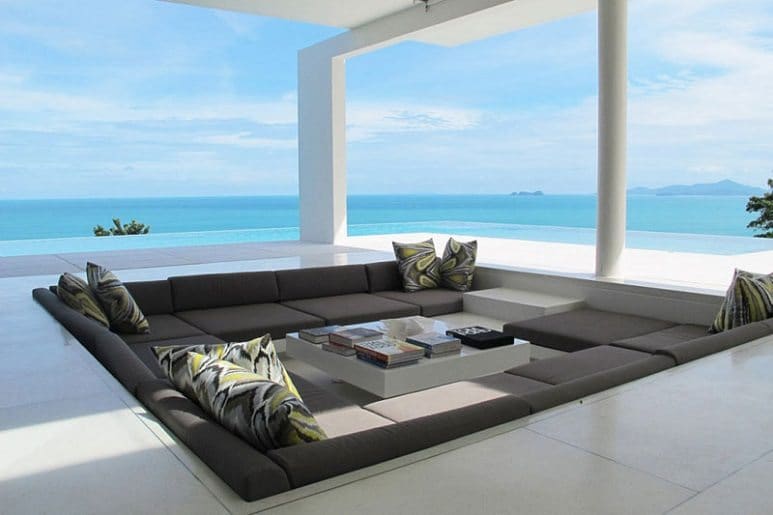
A more simplistic design that might be better suited to some people’s tastes.
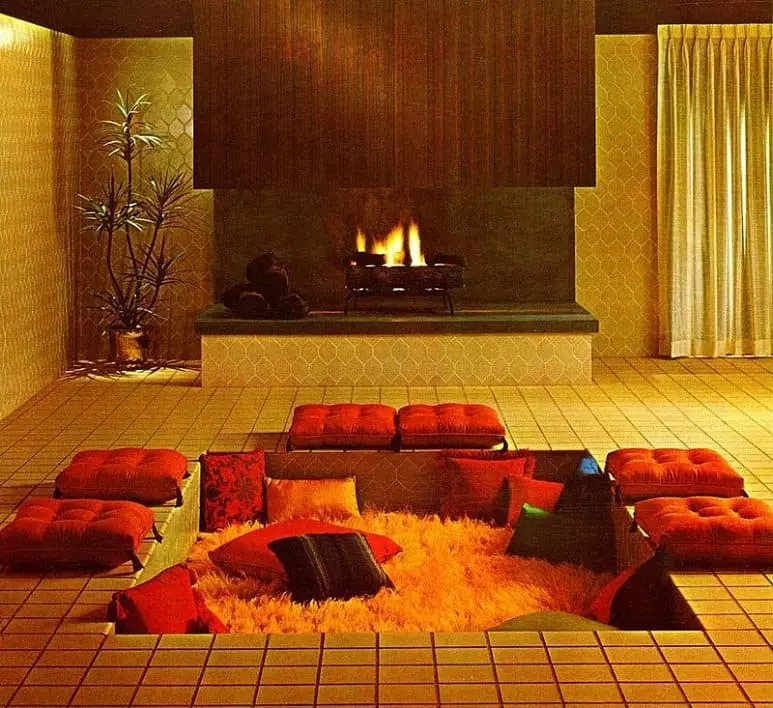
Some pits are half and half, one area is left open.
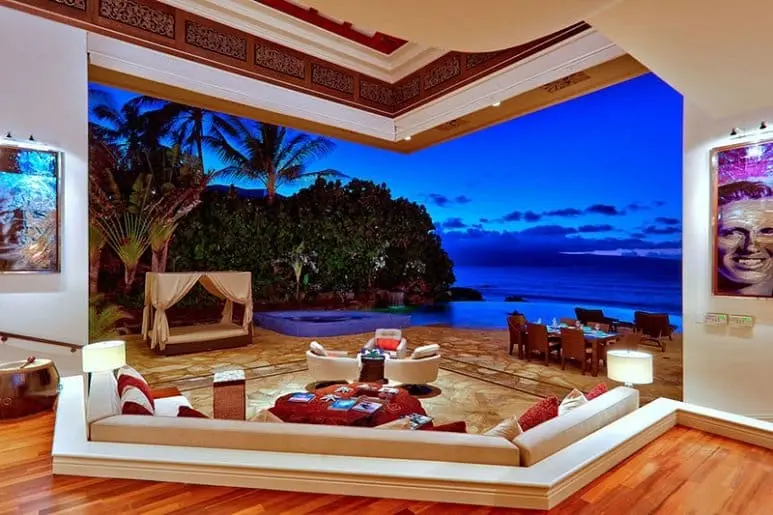
Some bold color choices here!

Many people think that a conversation pit (or otherwise known as a sunken living room) is a thing of the past, being most popular in the 50’s through to the 70’s. However, we think they’re fantastic! You can relax on your own, with a partner or friends… read a book, enjoy a drink, have a nap or just simply gather your thoughts. The possibilities are endless! All of the styles we have gathered below show that these conversation pits can be designed in a modern and stylish way.
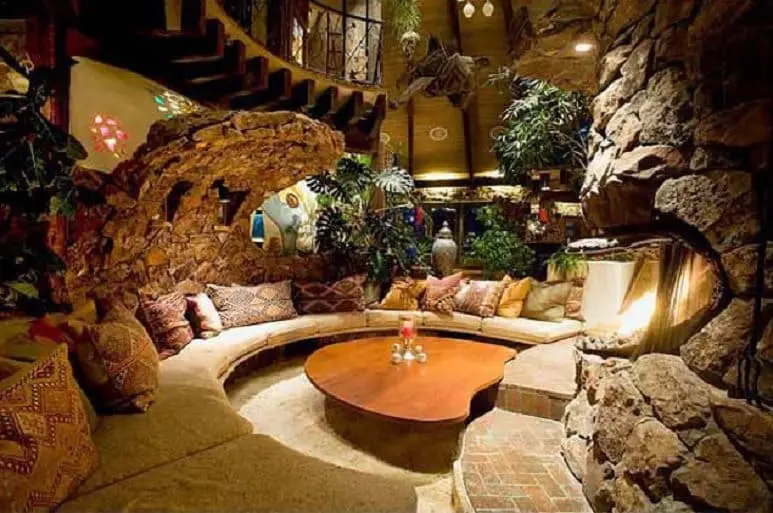
This design is bursting with character!
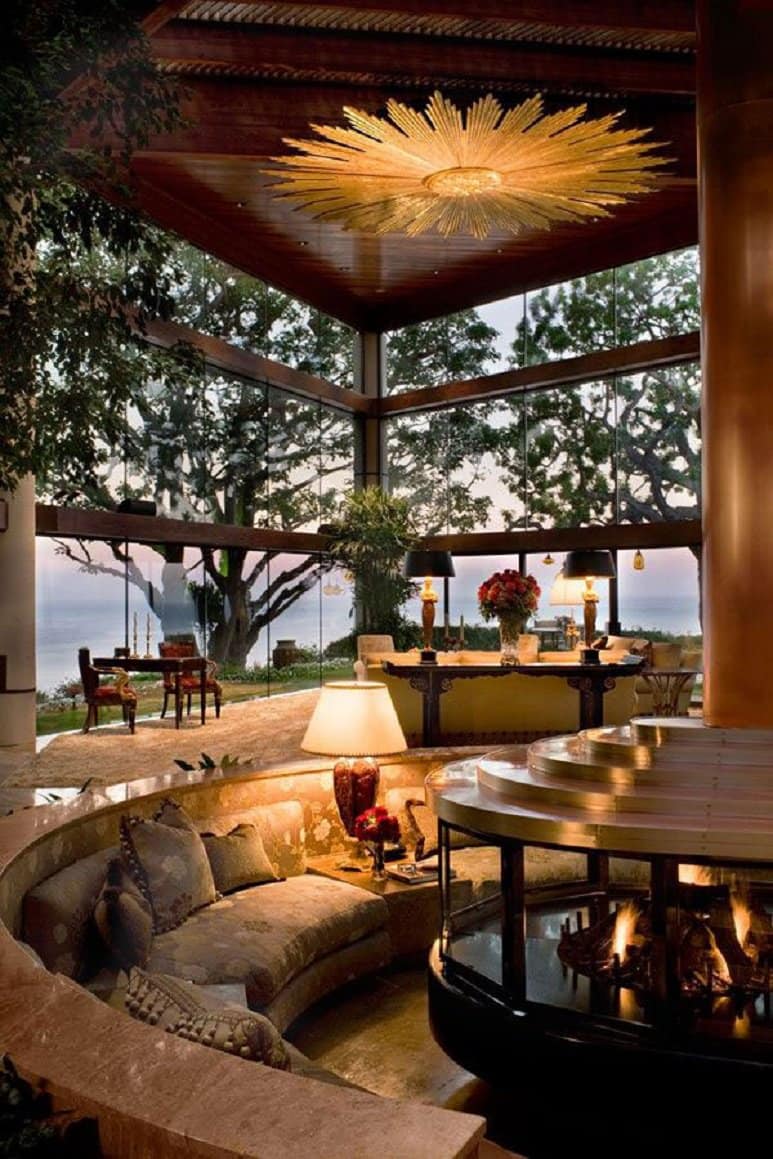
Modern yet classic.
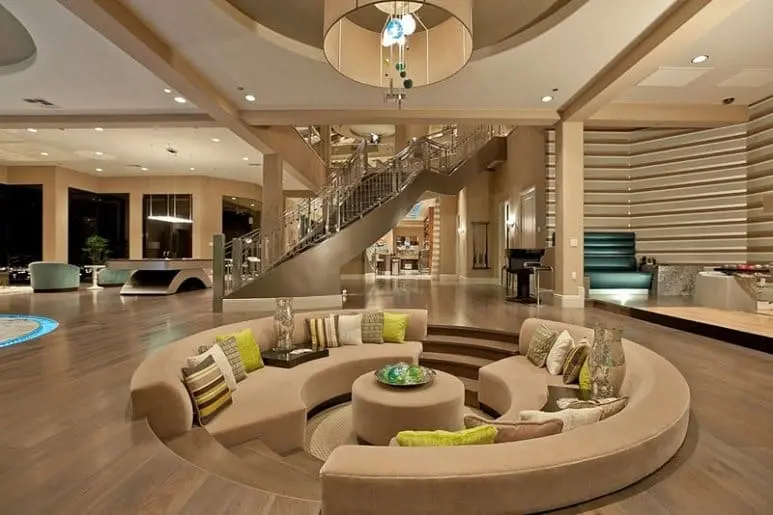
We can imagine some very chilled nights taking place here.
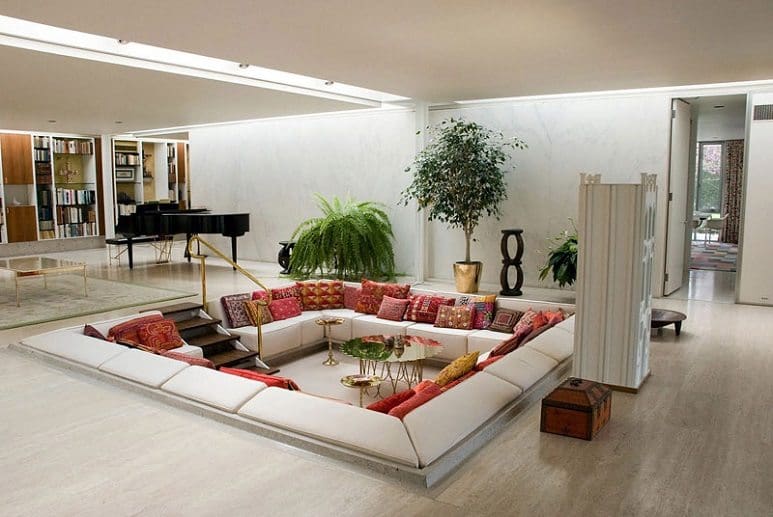
What an incredible view!
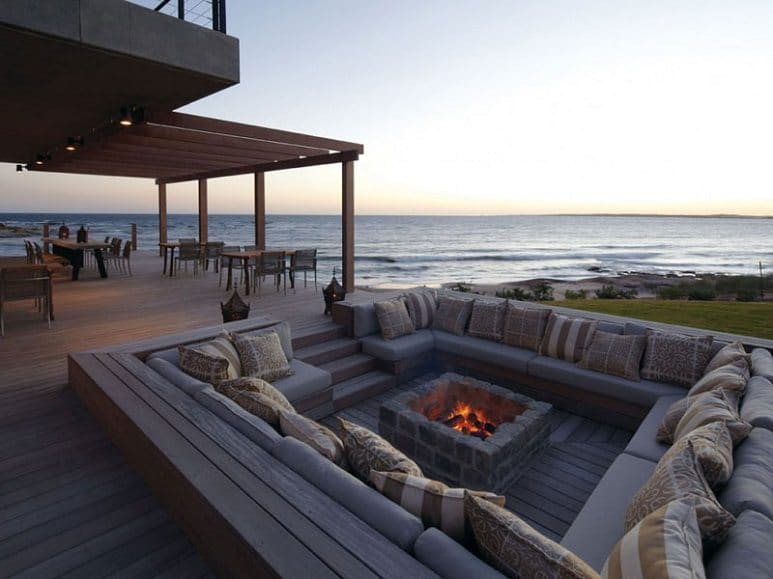
Perfect for a warm summer evening.
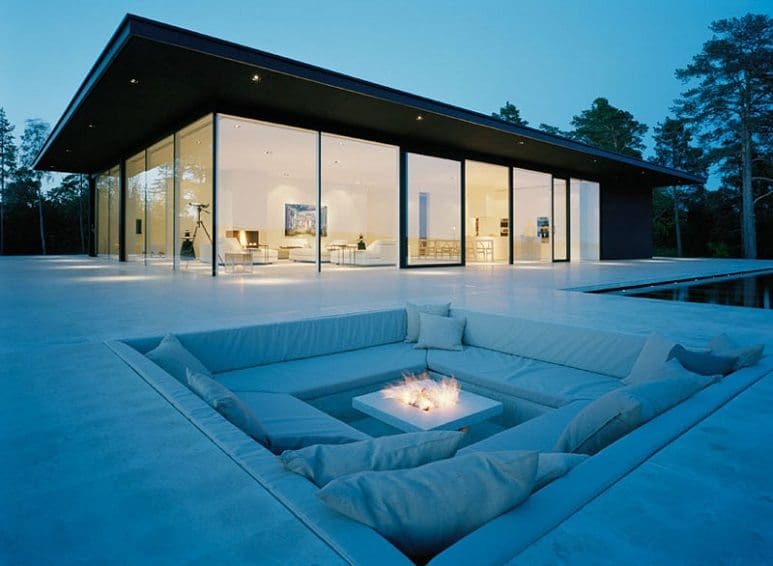
There is truly something to suit everyone’s tastes on this list! Modern and luxurious or homely and old school, take your pick! We love the whole sunken theme of these conversation pits. The dipping quite literally adds depth and dimension to the area that makes you feel somewhat like you’ve entered another room.
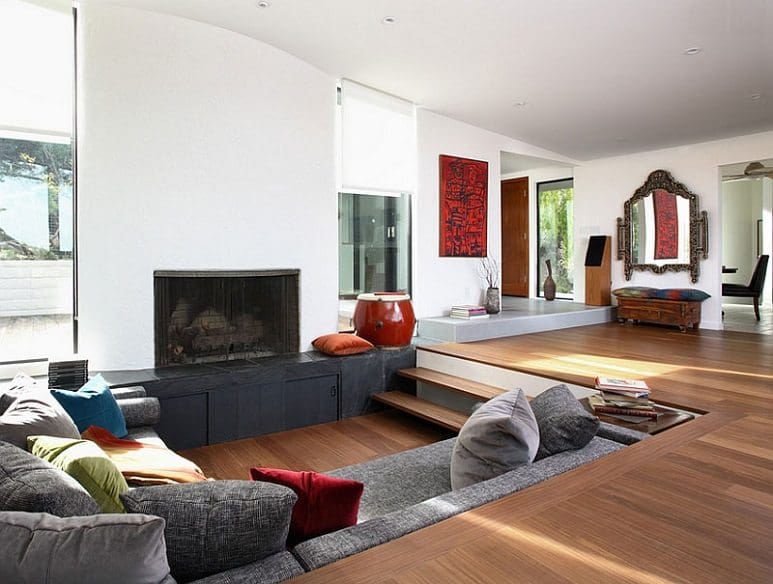
The lighting here is well suited.
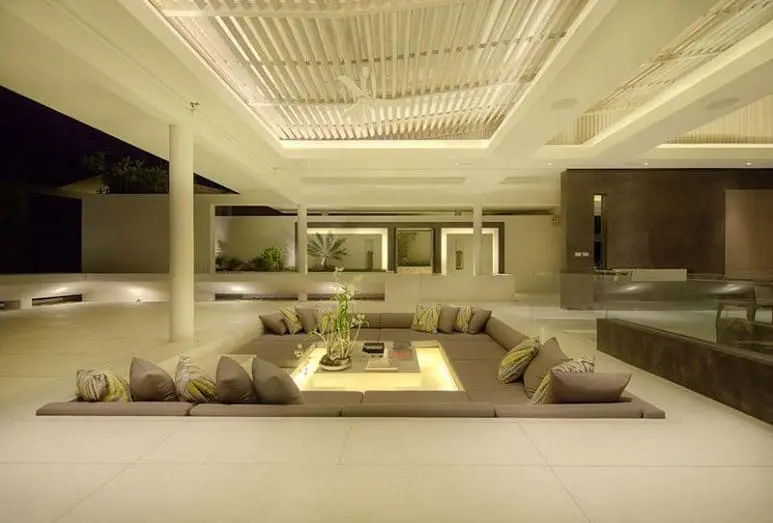
Spa vibes.
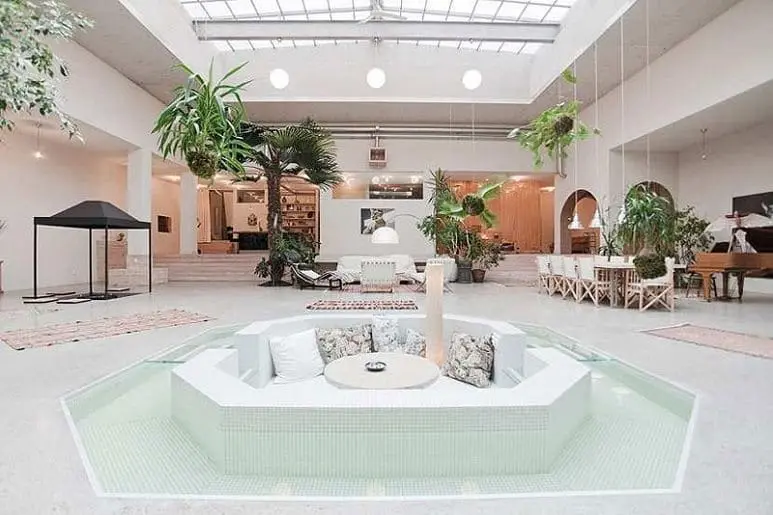
Conversation pits don’t have to stand out like a sore thumb. Look how nicely this one blends!
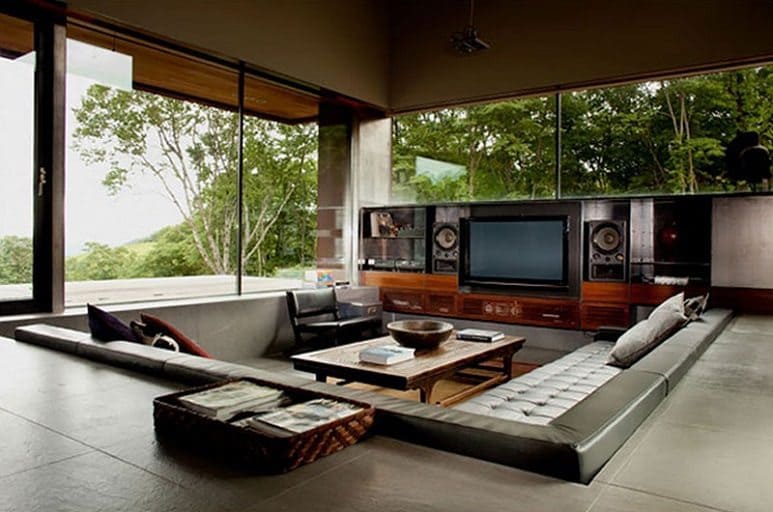
We adore this central fire pit feature!
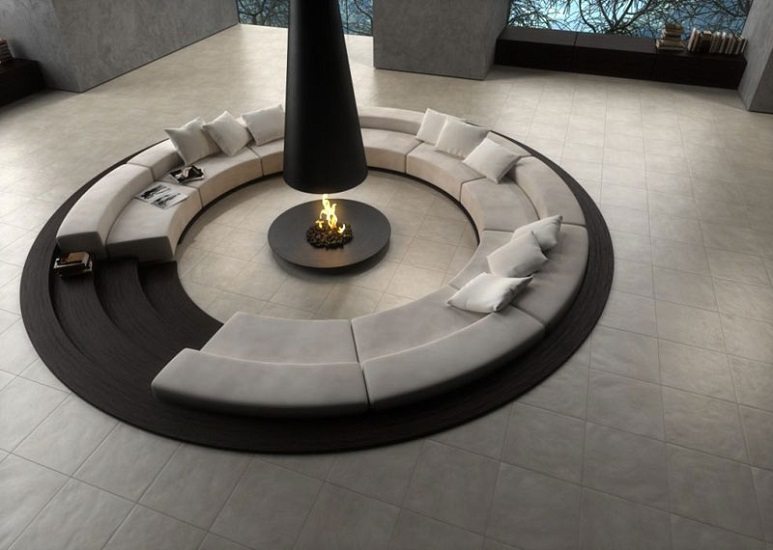
Perfect for a hotel hang out area.
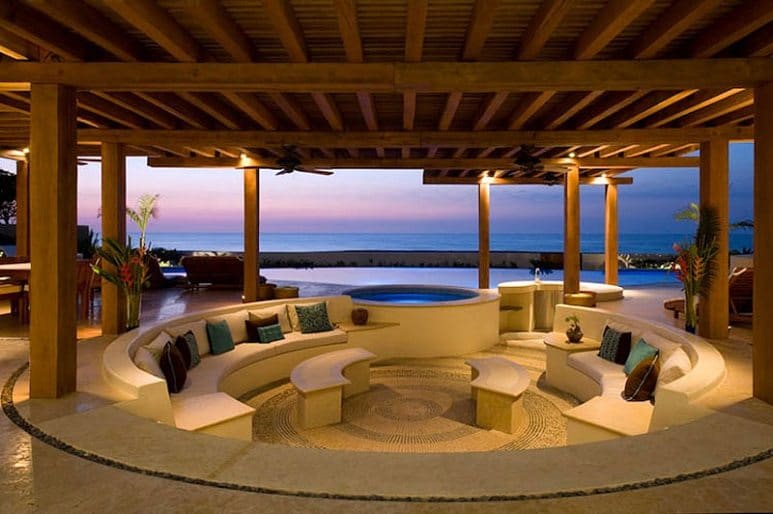
Source 1

